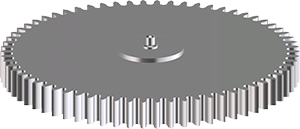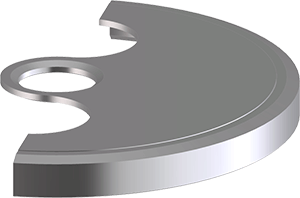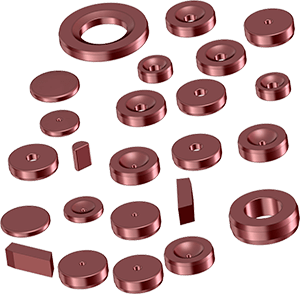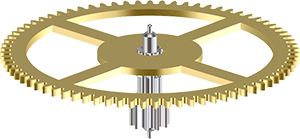Movement complications
Raketa has 1 “caliber” with 4 different “complications”. A “caliber” (or base movement) is a mechanical movement in its most simple form, i.e. simply showing the time (hours, minutes & seconds). “Complications” are additional functions that are added on to the “caliber” and that therefore make it more “complicated”. The Raketa Watch Factory will gradually roll-out more complications over the next few years. Stay tuned!
Movement 2615
3 hand movement with avtomat complication (inside the Raketa Classic BIG ZERO)
| Number of jewels: | 27 |
| Testing positions: | 4 |
| Average rate (s/d): | -10+20 |
| Average running time (h): | 40 |
| Frequency/hour: | 18.000 / 2.5Hz |
| Bi-directional automatic winding: | Yes |
| Stopper of self-winding unit activated during manual winding: | Yes |
Movement 2615R
3 hand movement with avtomat & “reverse” (counter-clockwise) complications
(inside the Raketa watch “Russian Code”)
| Number of jewels: | 24 |
| Testing positions: | 4 |
| Average rate (s/d): | -10+20 |
| Average running time (h): | 40 |
| Frequency/hour: | 18.000 / 2.5Hz |
| Bi-directional automatic winding: | Yes |
| Stopper of self-winding unit activated during manual winding: | Yes |
Movement 2624
3 hand movement with avtomat & 24 hour complications
(inside the Raketa watch “Baikonur”)
| Number of jewels: | 24 |
| Testing positions: | 4 |
| Average rate (s/d): | -10+20 |
| Average running time (h): | 40 |
| Frequency/hour: | 18.000 / 2.5Hz |
| Bi-directional automatic winding: | Yes |
| Stopper of self-winding unit activated during manual winding: | Yes |



































 Russian
Russian English
English French
French